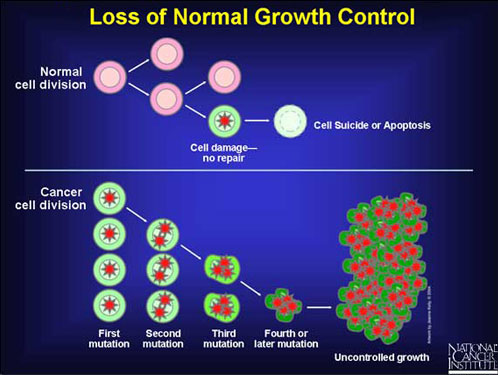» Cancer Information
» Skin Cancer
» Smoking & Cancer
» Types of Cancer
» Cancer Care
» Early Stage Cancer Main-Page
Early Stage Cancer
EarlyStageCancer is your Cancer, health-wellness and disease cancer resource.
, When cancer is detected in the early stages, the cancer can usually be treated effectively.
Key Points to determine the stage of the cancer.
- Staging describes the extent or severity of a person’s cancer. Knowing the stage of cancer helps the doctor plan treatment and estimate the person’s prognosis.
- Staging systems for cancer have evolved over time and continue to change as scientists learn more about cancer.
- The TNM staging system is based on the size and/or extent (reach) of the primary tumor (T), whether cancer cells have spread to nearby (regional) lymph nodes (N), and whether metastasis (M), or the spread of the cancer to other parts of the body, has occurred.
- Physical exams, imaging procedures, laboratory tests, pathology reports, and surgical reports provide information to determine the stage of a cancer.
What is Staging of Cancer?
Staging of cancer describes the severity of a person’s cancer based on the size and/or extent of the original tumor and whether or not cancer has spread in the body. Staging is important for several reasons:
- Staging helps the doctor plan the appropriate treatment.
- Cancer stage can be used in estimating a person’s prognosis.
- Knowing the stage of cancer is important in identifying clinical trials that may be a suitable treatment option for a patient.
- Staging helps health care providers and researchers exchange information about patients; it also gives them a common terminology for evaluating the results of clinical trials and comparing the results of different trials.
Staging is based on knowledge of the way cancer progresses. Cancer cells grow and divide without control or order, and they do not die when they should. As a result, they often form a mass of tissue called a tumor. As a tumor grows, it can invade nearby tissues and organs. Cancer cells can also break away from a tumor and enter the bloodstream or the lymphatic system. By moving through the bloodstream or lymphatic system, cancer cells can spread from the primary site to lymph nodes or to other organs, where they may form new tumors. An example on cancer metastasis leading to a worse prognosis is how early prostate cancer can rapidly be terminal.
What are the common elements of staging systems?
Staging systems for cancer have evolved over time. They continue to change as scientists learn more about cancer. Some staging systems cover many types of cancer; others focus on a particular type. The common elements considered in most staging systems are as follows:
- Site of the primary tumor and the cell type (e.g., adenocarcinoma, squamous cell carcinoma)
- Tumor size and/or extent (reach)
- Regional lymph node involvement (the spread of cancer to nearby lymph nodes)
- Number of tumors (the primary tumor and the presence of metastatic tumors, or metastases)
- Tumor grade * (how closely the cancer cells and tissue resemble normal cells and tissue)
More on Cancer as a Disease
Cancer is a term used for diseases in which abnormal cells divide without control and are able to invade other tissues. Cancer cells can spread to other parts of the body through the blood and lymph systems.
Cancer is not just one disease but many diseases. There are more than 100 different types of cancer. Most cancers are named for the organ or type of cell in which they start - for example, cancer that begins in the colon is called colon cancer; cancer that begins in melanocytes of the skin is called melanoma.
Cancer types can be grouped into broader categories. The main categories of cancer include:
- Carcinoma - cancer that begins in the skin or in tissues that line or cover internal organs. There are a number of subtypes of carcinoma, including adenocarcinoma, basal cell carcinoma, squamous cell carcinoma, and transitional cell carcinoma.
- Sarcoma - cancer that begins in bone, cartilage, fat, muscle, blood vessels, or other connective or supportive tissue.
- Leukemia - cancer that starts in blood-forming tissue such as the bone marrow and causes large numbers of abnormal blood cells to be produced and enter the blood.
- Lymphoma and myeloma - cancers that begin in the cells of the immune system.
- Central nervous system cancers - cancers that begin in the tissues of the brain and spinal cord.
Origins of Cancer
All cancers begin in cells, the body's basic unit of life. To understand cancer, it's helpful to know what happens when normal cells become cancer cells.
The body is made up of many types of cells. These cells grow and divide in a controlled way to produce more cells as they are needed to keep the body healthy. When cells become old or damaged, they die and are replaced with new cells.
However, sometimes this orderly process goes wrong. The genetic material (DNA) of a cell can become damaged or changed, producing mutations that affect normal cell growth and division. When this happens, cells do not die when they should and new cells form when the body does not need them. The extra cells may form a mass of tissue called a tumor.

Not all tumors are cancerous; tumors can be benign or malignant.
- Benign tumors aren't cancerous. They can often be removed, and, in most cases, they do not come back. Cells in benign tumors do not spread to other parts of the body.
- Malignant tumors are cancerous. Cells in these tumors can invade nearby tissues and spread to other parts of the body. The spread of cancer from one part of the body to another is called metastasis.
Some cancers do not form tumors. For example, leukemia is a cancer of the bone marrow and blood.



